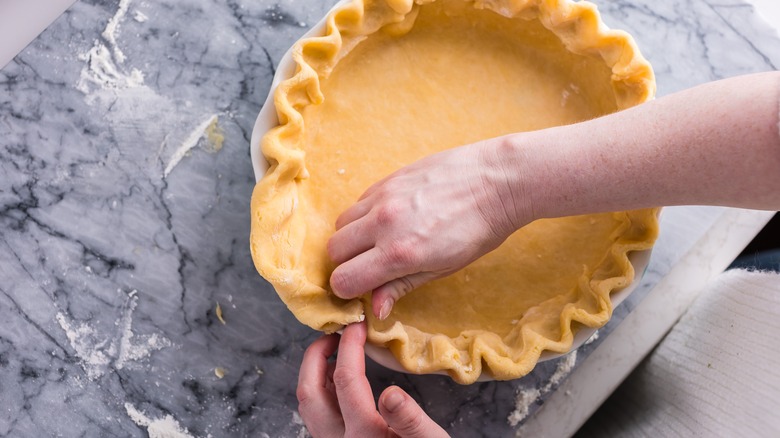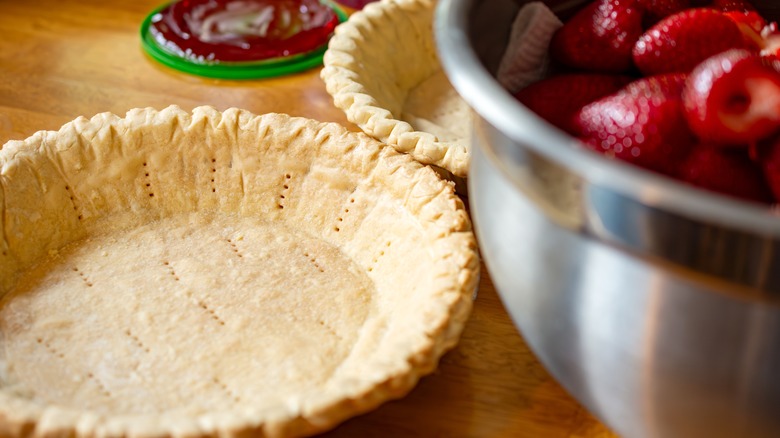The Dusty Addition That Makes Pie Crust Ultra Flaky
"Crust dust" doesn't sound like something you'd want to eat — or even touch with your bare hands. But, according to Vivian Villa, chef, product developer, and founder of Villa's Authentic Sauces, crust dust is key to keeping the bottoms of pies flaky and crisp.
Soggy bottoms are a common pie-making faux pas. The solution? Keep the bottom as dry as possible. But how can you avoid getting it wet if you're making a pie with a gooey, juicy filling, like blueberry, apple, or cherry?
Villa recommends crust dust. "Crust dust is a must," she says. "If the filling of the pie is going to be wet, a dusting of flour and sugar will help to keep the crust from getting soggy." The technique is simple. "I mix a couple tablespoons each of flour and sugar and sprinkle into a chilled crust just before filling," Villa explains. "It works to absorb much of the liquid, wicking it away from the pastry."
Once you've baked the pie, the flour will keep the filling from seeping into the crust. Sugar, on the other hand, keeps the flour from clumping together while absorbing some of the moisture on its own. Why not use something more absorbent, like corn starch? Because corn starch is too gooey. It'll create a gummy layer at the bottom of the pie. Extra flour won't improve the results, either. A thin, even dusting will do the trick.
What other techniques stave off soggy pie crusts?
Crust dust isn't the only trick you can use to keep the bottom crust crisp. Ingredients like egg wash or chocolate will create a barrier between the crust and the filling, too. But no barrier will save a poorly-made crust. "Pastry making is deceptively simple," says Villa. "The less you touch it the better, the trick is to bring ingredients together quickly and chill since warm hands melt the butter while too much water makes it soggy." She also recommends measuring by weight instead of volume. "Humidity and other factors will throw off ratios," she says. m"Measuring by weight is exact." Keep your pie crust simple by using water, but consider a mixture of lard and butter. It makes the crust easier to work with, which helps prevent overworked dough.
Consider your filling, too. "Controlling the amount of liquid in the filling (less liquid or more starch) also helps to keep crust from becoming soggy," Villa says. "Frozen fruit should be mixed with starch and added just before filling, not thawed."
Villa also recommends blind baking, a technique where bakers bake the crust for a few minutes before adding the filling. "Docking the chilled crust and blind baking before filling is another way of keeping the bottom of your pie crust flaky." While some bakers use weights to keep the crust from bubbling and buckling, docking (pricking small holes in the crust) keeps the crust flat without weights.

